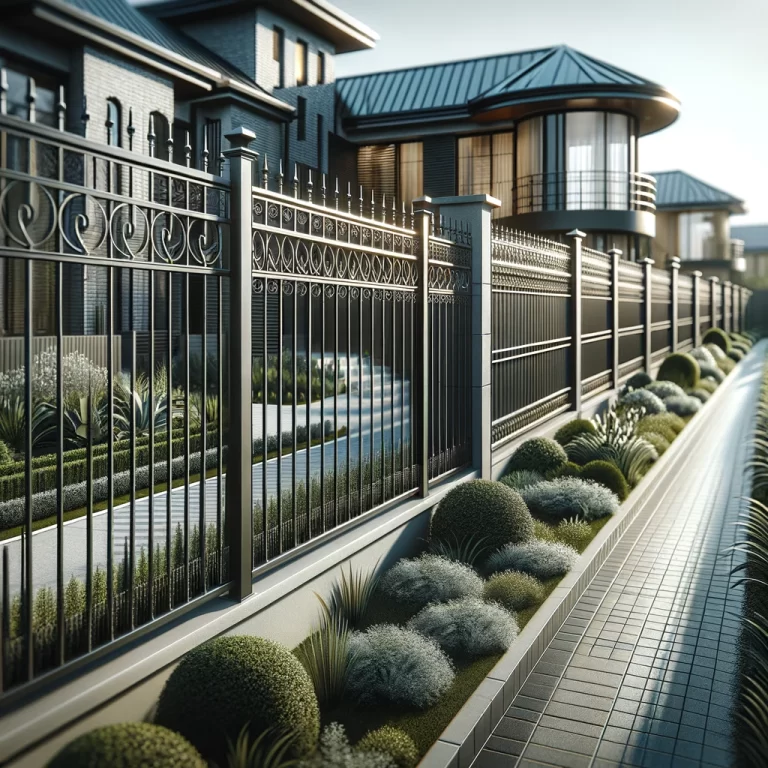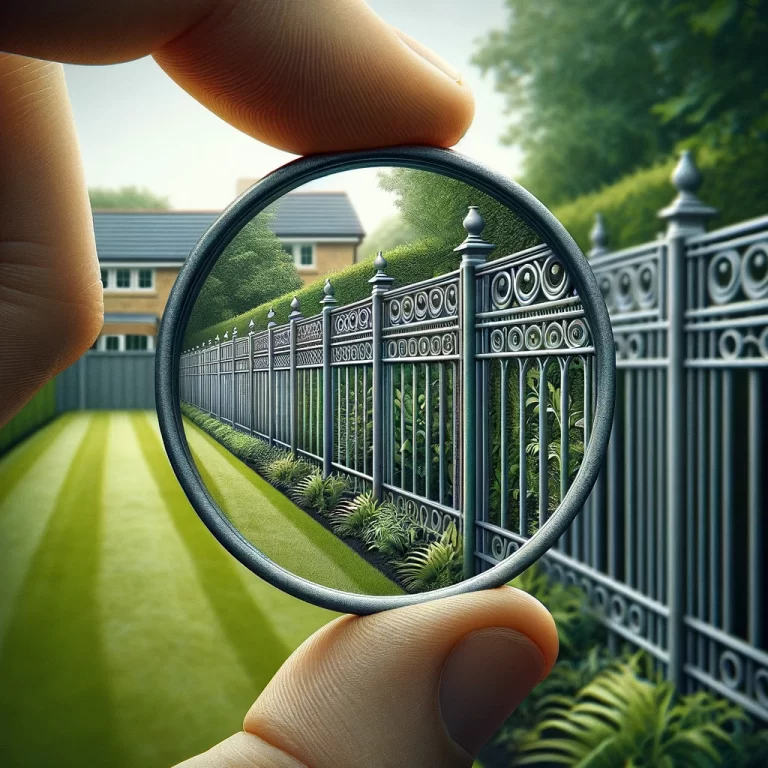Are you considering installing a fence but worried about the cost? Factors such as materials, type of fence, and labour costs all play a role in determining fencing prices. In this article, we will explore when the best time is to install a fence to save money, including off-season and off-peak times. We will also discuss the cheapest times of year for fencing, such as winter, end of summer, and early spring. We will provide tips on saving on fencing costs through DIY projects, negotiating with contractors, and using alternative materials. Stay tuned to find out how you can save on your next fencing project!

Factors that Affect Fencing Prices
Various factors contribute to fencing prices, including the choice of material, the type of fence selected, and labour costs involved.
When considering the material, the cost of the fence can vary significantly. Wood is a popular option that is relatively affordable, but it requires more maintenance compared to vinyl or aluminium. The type of fence also plays a crucial role; for instance, a privacy fence will generally cost more than a picket fence due to the additional materials needed.
Labour costs are another key component to take into account. Factors such as the complexity of the installation, the terrain where the fence will be erected, and the local labour rates all contribute to the overall expense of the project. The size of the area to be fenced can impact labour costs; a larger area will require more time and resources to complete.
Material
The choice of material significantly affects fencing prices, with options such as timber and post playing a key role in determining the overall cost.
Regarding pricing, the durability of the fencing material is a crucial factor to consider. Timber fences, for example, bring a natural and timeless charm to any property but may require more maintenance over time compared to other materials. On the other hand, post fences offer a sturdy and long-lasting option that can withstand various weather conditions with minimal upkeep required, potentially impacting the long-term costs of maintenance.
Type of Fence
The type of fence chosen is another critical factor influencing fencing prices, as specific designs or styles may require more time and expertise to install properly.
For instance, intricately designed wrought iron fences can be significantly more expensive than basic chain-link fences due to the complexity in installation and the cost of materials.
On the other hand, wood fences offer a wide range of customisation options, allowing homeowners to choose the type of wood, stain colour, and design pattern, all of which impact the final cost.
Modern vinyl fences, known for their durability and low maintenance, come in various styles such as picket, privacy, or post-and-rail, each with distinct installation requirements affecting the pricing.
Ornamental aluminium fences are not only elegant but also long-lasting, making them a premium choice that may require a higher budget for installation.
Labour Costs
Labour costs constitute a significant portion of fencing prices, as the expertise and efficiency of professional installers can affect the overall project cost.
In the realm of fencing installation, labour expenses go beyond mere wages, encompassing the skills and experience required to complete a project adeptly. Skilled professionals play a crucial role in ensuring that the project is executed efficiently and with precision.
The quality of workmanship directly impacts the durability and aesthetics of the fence, influencing its longevity and maintenance requirements. Adhering to project timelines is essential for cost control and overall project management. A well-coordinated team can expedite the installation process without compromising on quality, ultimately determining the total expense of the fencing project.
When is the Best Time to Install a Fence?
Choosing the ideal time to install a fence is crucial for ensuring its longevity and stability, with spring and summer being favourable seasons for installation.
During spring and summer, the weather conditions are typically warmer and more predictable, providing an ideal environment for construction activities such as fence installation. The stable ground during these seasons makes it easier to dig post holes and ensures better placement and alignment of the fence posts. The faster setting times for concrete footings in warmer weather expedite the overall installation process, allowing the fence to be completed more efficiently.
Off-season
Off-season periods, such as the beginning of the new year, can also offer advantages for fence installation, with potential cost savings and availability of professionals.
During the off-season for fence installation, which often aligns with the start of the new year, homeowners can benefit from cost-effective opportunities. Many fencing companies offer discounts or promotions during this time to attract customers, making it a favourable period to invest in a new fence without breaking the bank. Reduced demand for services in the early months of the year means shorter wait times for professional installations. Homeowners can enjoy quicker scheduling and completion of their fence projects compared to busier seasons.
Off-peak times
Choosing off-peak times, such as periods with minimal rain or heavy weather conditions, can ensure smoother fence installation processes and timely completion of the project.
Opting for off-peak times for fence installation not only minimises the risk of project delays due to inclement weather but also allows the construction team to work more efficiently without disruptions. Weather conditions play a crucial role in the success of any outdoor project, affecting the quality of work and overall timeline. By scheduling the installation during periods of stable weather, homeowners can expect a more seamless process with fewer interruptions and potential setbacks.
Weather conditions
Considering weather conditions, especially heavy rain or waterlogged soil, is crucial when planning a fence installation to ensure proper ground preparation and post stability.
Heavy rain can lead to challenging soil conditions, making it difficult to dig post holes and secure them effectively. The excessive moisture can cause posts to shift or sink, compromising the overall integrity of the fence. In such conditions, it’s important to allow for proper drainage and evaluate the soil composition before starting the installation process. Ensuring that the posts are set in concrete or gravel can offer more stability in wet soil. Adequate post installation in adverse weather conditions is essential to minimise future repairs and maintain the longevity of the fence.

What is the Cheapest Time of Year for Fencing?
Identifying the most cost-effective time of year for fencing projects can lead to potential savings, with winter, end of summer, and early spring being favourable periods.
Undertaking fencing projects during the winter, end of summer, or early spring can offer numerous advantages. During the winter season, many fencing companies experience reduced demand for their services, making it easier to schedule installations and potentially securing better pricing due to decreased competition.
The end of summer marks the conclusion of peak fencing season, leading to possible discounts and promotions as businesses aim to fill their calendars for the slower months ahead. The cooler temperatures of early spring provide ideal working conditions without the intense heat experienced in summer, allowing for efficient and comfortable installation.
Winter
Winter is considered a cost-effective time for fencing projects due to lower demand, potential discounts, and favourable ground conditions for installation.
One of the key advantages of opting for fencing projects during the winter months is the reduced costs associated with hiring professionals and purchasing materials. Since winter is considered an off-peak season for fencing installations, many companies offer discounts or special promotions to attract customers, making it a financially appealing choice.
The availability of professionals during the winter season is higher compared to peak seasons, as they have more open schedules and can dedicate more time to each project. This means quicker turnaround times and better attention to detail, resulting in higher quality work.
Despite concerns about the impact of winter weather conditions on project timelines, modern techniques and materials have made it possible to efficiently install fences even in cold temperatures. In fact, winter ground conditions can be advantageous for installation, as the cold can help prevent soil disruption and provide a stable foundation for the fence.
End of summer
The end of summer presents a cost-effective window for fencing projects, with potential discounts, mild weather, and lower demand for services.
As summer draws to a close, homeowners looking to enhance their property with a new fence can benefit from various advantages in this transitional season. Not only may they find reduced pricing options and promotions from fencing companies keen to close out the season with strong sales, but also the pleasant weather conditions provide an optimal setting for installation work. With temperatures cooling down and fewer disruptions due to extreme weather events, the end of summer offers a smoother and more efficient construction process.
Early spring
Early spring is an optimal time for fencing projects, offering moderate temperatures, ground readiness, and opportunities for spring-themed designs.
During early spring, the soil is beginning to thaw, making it easier to dig holes for fence posts without excessive effort. The moderate temperatures allow the wood to acclimatise properly, reducing the risk of warping or other issues. The aesthetic appeal of spring adds a special touch to fence designs, incorporating vibrant colours and natural elements.
Early spring fence installations also offer an advantage in terms of scheduling, as contractors are generally less busy compared to peak summer months, ensuring a quicker turnaround for your project.
Other Ways to Save on Fencing Costs
Along with choosing the right time for installation, exploring DIY options, negotiating with contractors, and considering alternative materials can help save on fencing costs.
- DIY approaches can significantly reduce expenses by taking on tasks like clearing the installation area, preparing the ground, or even assembling simpler fence sections without professional help.
- Engaging in contractor negotiations enables the possibility of securing better rates, especially when offering to handle some non-specialised aspects of the project.
- The use of alternative materials such as bamboo, vinyl, or recycled materials can provide cost-effective options without compromising on durability and aesthetics.
Exploring second-hand markets for discounted materials or opting for modular fencing systems that are easier to install can aid in achieving budget-friendly fencing solutions.
DIY Fencing
Opting for DIY fencing projects can offer significant cost savings, provided individuals have the necessary skills, tools, and time for successful installation.
One of the primary advantages of engaging in do-it-yourself fencing projects is the ability to save a considerable amount of money compared to hiring professionals. By taking on the installation process independently, individuals can eliminate labour costs and markup fees typically associated with hiring contractors. DIYers have the freedom to choose materials and design elements that align with their preferences, allowing for customisation options that may not be available through traditional installation services.
It is crucial for individuals to possess some basic skills such as measuring accurately, using tools like drills and saws proficiently, and understanding fundamental construction principles. Having access to the appropriate tools and equipment is essential for the smooth execution of the project. Investing in quality tools upfront can streamline the installation process and contribute to a more durable and visually appealing fence. DIY fencing projects can be a rewarding experience for those willing to put in the effort and commit to developing their skills in fencing installation.
Negotiating with Contractors
Effective negotiation with fencing contractors can lead to potential cost reductions, customised service offerings, and improved project timelines.
When engaging with fencing contractors, clients have the opportunity to communicate their specific needs and budget constraints, which enables contractors to tailor their services accordingly.
This personalised approach not only ensures that the project meets individual requirements but also helps in minimising unnecessary expenses.
By discussing cost-saving measures and exploring various options, both parties can work together to find the most efficient and cost-effective solutions.
Using Alternative Materials
Exploring alternative fencing materials can offer cost-effective solutions without compromising on durability, aesthetics, or installation quality.
When considering alternative fencing materials, one of the key advantages is the significant cost savings that can be achieved. By opting for materials such as composite wood, bamboo, or recycled plastics, individuals can enjoy a more budget-friendly fencing solution without sacrificing quality. These materials often require less maintenance and have long-term durability, making them a smart investment in the long run.
The design versatility afforded by alternative fencing options is a major draw for those seeking a unique and customisable look for their property. With a wide range of styles, colours, and textures available, homeowners can tailor their fencing to complement the aesthetic of their outdoor space.
Installation ease is another benefit worth noting. Many alternative fencing materials are designed for straightforward installation, often requiring fewer tools and less time compared to traditional materials like wrought iron or brick. This can lead to additional cost savings through reduced labour expenses.
Conclusion
Selecting the right time for fence installation, optimising material choices, and managing labour costs are key strategies to ensure cost-effective fencing projects.
- Strategic timing plays a crucial role in the success of a fencing project. For instance, installing a fence during the off-peak season can often result in cost savings due to lower demand.
- Proper material selection is equally important as it affects both the cost and longevity of the fence. By choosing durable materials suited to the local climate conditions, homeowners can avoid frequent repairs and replacements.
- Efficient labour cost management is the third pillar of a budget-friendly fencing solution. Hiring experienced professionals and ensuring clear communication can help prevent unexpected expenses and delays.








